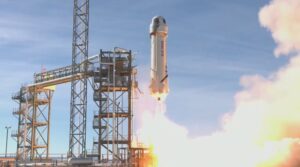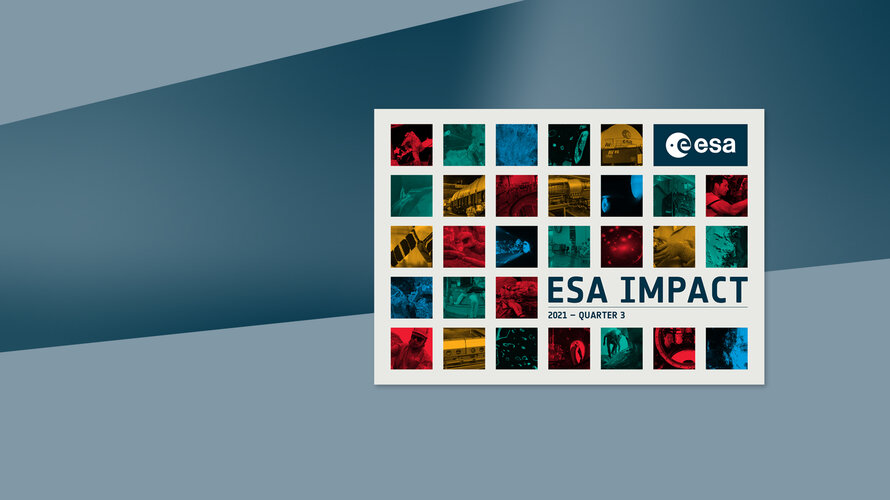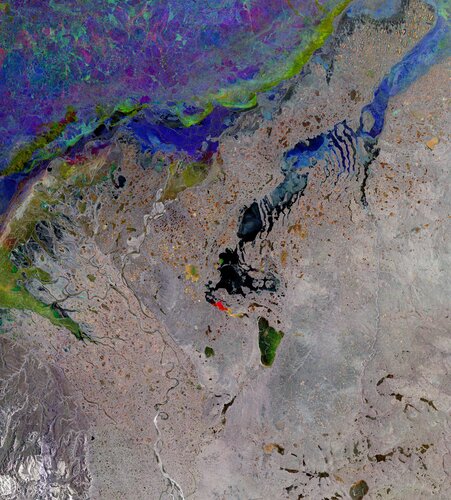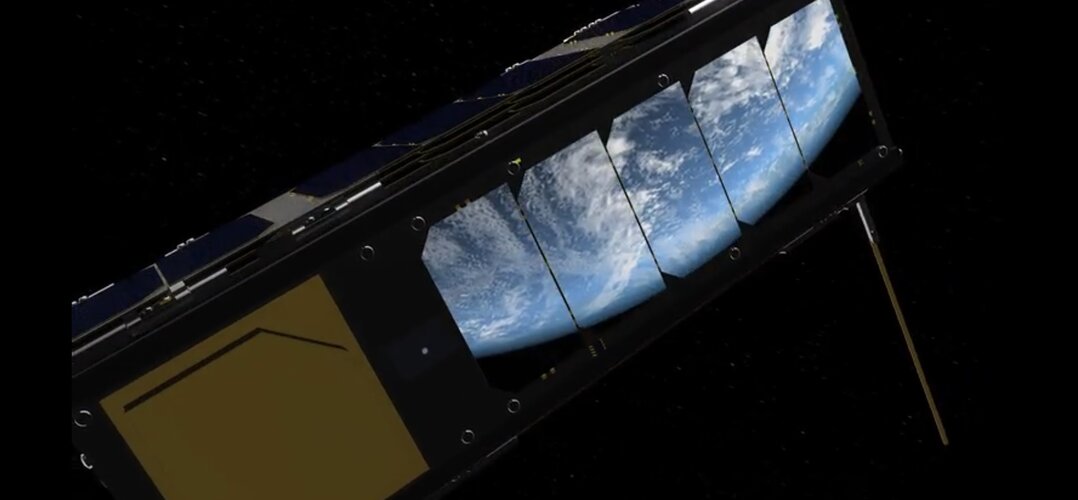Phantom Space announces agreement to build and launch 72 satellite constellation for Ingenu
Friday, 01 October 2021 10:51 Phantom Space Corporation, a space transportation technology development and manufacturing company, has announced that they signed an agreement with Ingenu, provider of one of the leading Industrial Internet of Things (IIoT) technology platforms.
The agreement includes the production, manufacturing and launch of a 72 satellite constellation (AFNIO) that Ingenu will be utilizing to host the
Phantom Space Corporation, a space transportation technology development and manufacturing company, has announced that they signed an agreement with Ingenu, provider of one of the leading Industrial Internet of Things (IIoT) technology platforms.
The agreement includes the production, manufacturing and launch of a 72 satellite constellation (AFNIO) that Ingenu will be utilizing to host the RockSat-X team witnesses experiment launched into space
Friday, 01 October 2021 10:51 On the Eastern Shore of Virginia against a clear blue August sky, a sounding rocket stood ready on the launchpad at the NASA Wallops Flight Facility. With undergraduate student teams, faculty advisors, and family eagerly awaiting and viewing the launch via livestream coverage, the countdown began.
Late in the afternoon of Aug. 19, the Terrier-Improved Malemute sounding rocket successfully
On the Eastern Shore of Virginia against a clear blue August sky, a sounding rocket stood ready on the launchpad at the NASA Wallops Flight Facility. With undergraduate student teams, faculty advisors, and family eagerly awaiting and viewing the launch via livestream coverage, the countdown began.
Late in the afternoon of Aug. 19, the Terrier-Improved Malemute sounding rocket successfully FAA clears Virgin Galactic to resume flights after investigation
Friday, 01 October 2021 10:51 The Federal Aviation Administration said Wednesday that Richard Branson's space tourism company can return to spaceflight after conducting an investigation into issues with the firm's July 11 launch.
A probe into the flight, which included Branson as a passenger, found the company's SpaceShipTwo deviated from its assigned airspace as it descended to Spaceport America in New Mexico, accordi
The Federal Aviation Administration said Wednesday that Richard Branson's space tourism company can return to spaceflight after conducting an investigation into issues with the firm's July 11 launch.
A probe into the flight, which included Branson as a passenger, found the company's SpaceShipTwo deviated from its assigned airspace as it descended to Spaceport America in New Mexico, accordi Lake breach flooding played big role in Martian geography
Friday, 01 October 2021 10:51 A significant amount - at least 25 percent - of Martian valley networks formed as a result of lake breach flooding, as reported in a paper on which Planetary Science Institute Research Scientist Alexander Morgan is an author.
This helps us better understand the past climate history of Mars, said Morgan, a co-author on "The importance of lake breach floods for valley incision on early Mars"
A significant amount - at least 25 percent - of Martian valley networks formed as a result of lake breach flooding, as reported in a paper on which Planetary Science Institute Research Scientist Alexander Morgan is an author.
This helps us better understand the past climate history of Mars, said Morgan, a co-author on "The importance of lake breach floods for valley incision on early Mars" NASA's Lucy science mission will fly by eight asteroids
Friday, 01 October 2021 10:51 NASA plans to launch its Lucy spacecraft from Florida on Oct. 16 to fly by eight asteroids starting in 2025, marking the first time scientists will gain close-up views of them.
The spacecraft for the $981 million mission is at Kennedy Space Center for launch preparations, which include packing atop an Atlas V rocket for its 12-year voyage. United Launch Alliance plans to send the probe int
NASA plans to launch its Lucy spacecraft from Florida on Oct. 16 to fly by eight asteroids starting in 2025, marking the first time scientists will gain close-up views of them.
The spacecraft for the $981 million mission is at Kennedy Space Center for launch preparations, which include packing atop an Atlas V rocket for its 12-year voyage. United Launch Alliance plans to send the probe int China's Chang'e-4 completes 1,000 days on far side of moon
Friday, 01 October 2021 10:51 The lander and rover of the Chang'e-4 probe have worked for 1,000 Earth days on the far side of the moon as of Wednesday, according to the Lunar Exploration and Space Program Center of the China National Space Administration.
The lander and rover Yutu-2 are in good condition. The payloads aboard are also working properly and will continue the scientific exploration on the far side of the m
The lander and rover of the Chang'e-4 probe have worked for 1,000 Earth days on the far side of the moon as of Wednesday, according to the Lunar Exploration and Space Program Center of the China National Space Administration.
The lander and rover Yutu-2 are in good condition. The payloads aboard are also working properly and will continue the scientific exploration on the far side of the m Study finds photosynthesis in Venus' clouds could support life
Friday, 01 October 2021 10:51 New data analysis has found that the sunlight filtering through Venus' clouds could support Earth-like photosynthesis in the cloud layers and that chemical conditions are potentially amenable to the growth of microorganisms.
Biochemistry Professor Rakesh Mogul is the lead author of the study, Potential for Phototrophy in Venus' Clouds, published online this weekin the journal Astrobiology'
New data analysis has found that the sunlight filtering through Venus' clouds could support Earth-like photosynthesis in the cloud layers and that chemical conditions are potentially amenable to the growth of microorganisms.
Biochemistry Professor Rakesh Mogul is the lead author of the study, Potential for Phototrophy in Venus' Clouds, published online this weekin the journal Astrobiology' Mercury ahead
Friday, 01 October 2021 10:51 The ESA/JAXA BepiColombo mission to Mercury will make the first of six flybys of its destination planet on 1 October before entering orbit in 2025.
Hot on the heels of its last Venus flyby in August, the spacecraft's next exciting encounter is with Mercury at 23:34 UTC on 1 October (01:34 CEST 2 October). It will swoop by the planet at an altitude of about 200 km, capturing imagery and sci
The ESA/JAXA BepiColombo mission to Mercury will make the first of six flybys of its destination planet on 1 October before entering orbit in 2025.
Hot on the heels of its last Venus flyby in August, the spacecraft's next exciting encounter is with Mercury at 23:34 UTC on 1 October (01:34 CEST 2 October). It will swoop by the planet at an altitude of about 200 km, capturing imagery and sci Scientists recreate cosmic reactions to unlock astronomical mysteries
Friday, 01 October 2021 10:51 Experiments will give scientists a closer look at how exploding stars create world's heaviest elements. How do the chemical elements, the building blocks of our universe, get built?
This question has been at the core of nuclear physics for the better part of a century. At the beginning of the 20th century, scientists discovered that elements have a central core or nucleus. These nuclei con
Experiments will give scientists a closer look at how exploding stars create world's heaviest elements. How do the chemical elements, the building blocks of our universe, get built?
This question has been at the core of nuclear physics for the better part of a century. At the beginning of the 20th century, scientists discovered that elements have a central core or nucleus. These nuclei con FAA reviewing Blue Origin safety allegations
Friday, 01 October 2021 10:13
The FAA says it is reviewing allegations about safety issues at Blue Origin raised in an explosive essay by a group of current and former employees.
Join our free online Space2Connect event
Friday, 01 October 2021 09:47
The first ESA virtual conference devoted entirely to telecommunications will take place between 11 October and 14 October.
Out now: ESA’s third quarter in images
Friday, 01 October 2021 09:10
Out now: ESA’s third quarter in images
Earth from Space: Mackenzie River, Canada
Friday, 01 October 2021 07:00
The Copernicus Sentinel-1 mission takes us over the Mackenzie River, a major river system in the Canadian boreal forest. Its basin is the largest in Canada and is the second largest drainage basin of any North American river, after the Mississippi.
Trading spaces: ESA bolsters European business
Friday, 01 October 2021 07:00
Yesterday, ESA’s orbiting laboratory, OPS-SAT, hosted the first-ever stock trade in space. The successful experiment required developers at Europe’s leading online broker flatexDEGIRO to think far outside of the box and adapt their software to the technical demands and constrained bandwidth found on an orbiting platform at 500 km altitude.
Trading space: ESA bolsters European business
Friday, 01 October 2021 07:00
Yesterday, ESA’s orbiting laboratory, OPS-SAT, hosted the first-ever stock trade in space. The successful experiment required developers at Europe’s leading online broker flatexDEGIRO to think far outside of the box and adapt their software to the technical demands and constrained bandwidth found on an orbiting platform at 500 km altitude.

